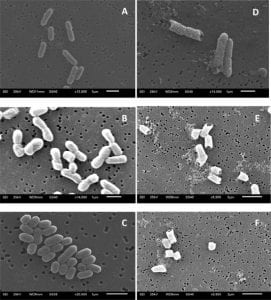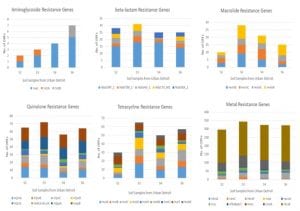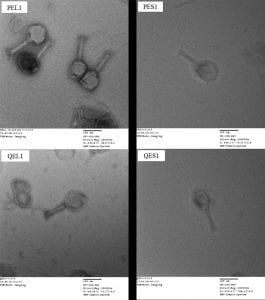Welcome to the Food Microbiology Warrior Site!
Our team works on microbial food safety. The overall goal is to understand the role that food and agriculture play in transmitting human infectious diseases. Food and food production environment are important reservoir of human bacterial pathogens. Agriculture practice and food processing may select certain molecular features of foodborne bacteria, which may facilitate bacteria to contaminate and persist in the food chain, develop antimicrobial resistance or other virulence potential, and possibly cause human diseases. Specifically, we apply traditional microbiological tools with modern technology to understand:
1. The prevalence and persistence of antimicrobial resistance in food and agriculture;
2. Phage as a reservoir and transmission vehicle of antimicrobial resistance;
3. Food safety and sustainability in urban agriculture;
4. Development of novel food safety control
Understanding Antibiotic Resistance from an Environmental Perspective
Environmental antibiotic resistance is attracting extensive research and public health attention due to increasing evidence showing that the evolution and spread of antibiotic resistance in the environment contribute to the occurrence of antibiotic resistance in the clinical environment. The situation in the agricultural environment is even more complicated, as various environmental conditions and agricultural practices may exert a unique impact on the prevalence and persistence of antibiotic resistance. Our research demonstrated that urban agricultural soil receiving no animal wastes or wastewater has a diverse population of antibiotic resistance phenotypes and genotypes. Metagenomic data revealed the prevalence and abundance of genes encoding resistance to quinolones, β-lactams, and tetracyclines, as well as efflux pump genes in the soil. The positive correlation between antibiotic resistance genes and metal resistance genes provided indirect evidence of possible co-selection of antibiotic resistance by heavy metals.
Phage Disseminate Antibiotic Resistance in the Environment
Antibiotic resistance can disseminate in the environment via horizontal gene transfer where conjugative plasmids, transposons, and phage are major vehicles. The former two are suggested as main vehicles for gene transfer in clinical settings, whereas phage may play a bigger role outside hospitals due to its abundance and persistence in the environment. While phage can carry multiple antibiotic resistance genes, the potential of phage transduction has yet to be well understood on phage of environmental origin. E. coli phages isolated from urban wastewater were characterised by host range determination, transmission electron microscopy (TEM), antibiotic resistance gene identification, and phage transduction. Of nine host range patterns observed, six were able to multiply in three or more indicator strains, including Shiga toxin-producing E. coli (STEC). The blaTEM gene was detected in 15 phages, of which 6 were able to transduce blaTEM into E. coli ATCC 13706. The data suggest that phages with broad host range are prevalent in the urban environment and can serve as a natural reservoir of antibiotic resistance genes. They can also transfer antibiotic resistance genes via phage transduction and may contribute to the dissemination of antibiotic resistance in the environment. TEM Images: E. coli phage of environmental origin
 Applying Oregano Oil Nanoemulsion to Food Safety Control
Applying Oregano Oil Nanoemulsion to Food Safety Control
Although antimicrobial activities of plant essential oils are well documented, challenges remain as to their application in fresh produce due to the hydrophobic nature of essential oils. Oregano oil nanoemulsions were formulated with a food-grade emulsifier and evaluated for their efficacy in inactivating the growth of foodborne bacteria on fresh lettuce. Samples were stored at 4 °C and enumerated for bacteria at fixed intervals (0 h, 3 h, 24 h, and 72 h). Compared to control, 0.05% nanoemulsion showed an up to 3.44, 2.31, and 3.05 log CFU/g reductions in L. monocytogenes, S. Typhimurium, and E. coliO157:H7, respectively. Up to 3.57, 3.26, and 3.35 log CFU/g reductions were observed on the same bacteria by the 0.1% treatment. Scanning Electron Microscopy (SEM) demonstrated disrupted bacterial membranes due to oregano oil treatment. Applying oregano oil nanoemulsions to fresh produce may be an effective antimicrobial control strategy.
SEM Images: Control without treatment: (A) L. monocytogenes (B) S. Typhimurium (C) E. coli O157:H7. Bacterial cells treated with 0.05% oregano oil emulsion: (D) L. monocytogenes (E) S. Typhimurium (F) E. coli O157:H7.


